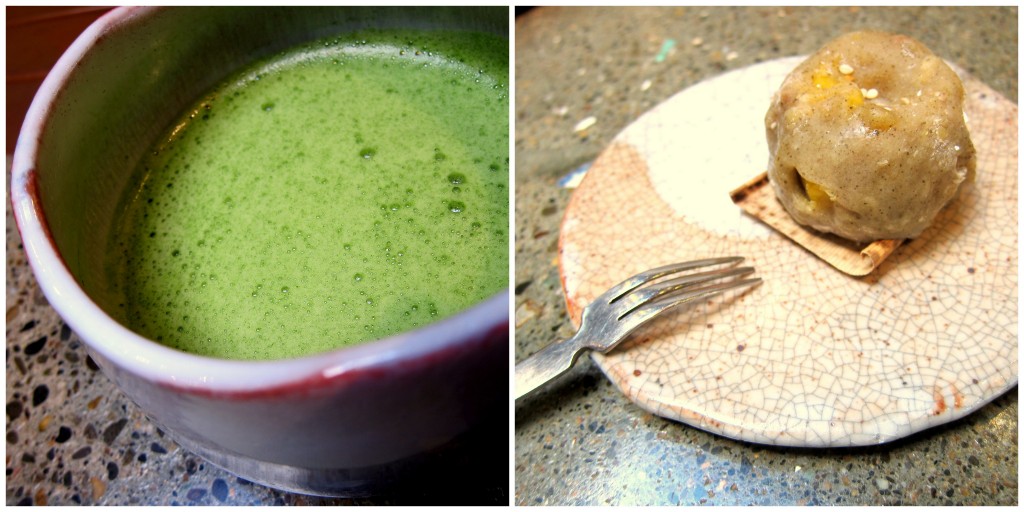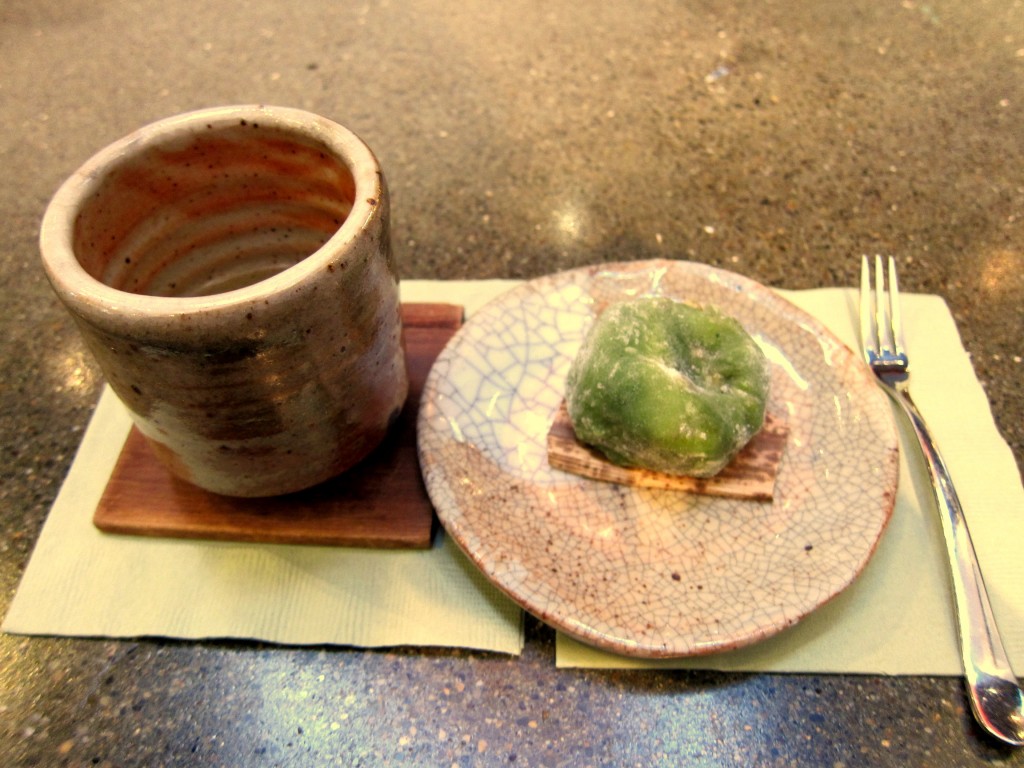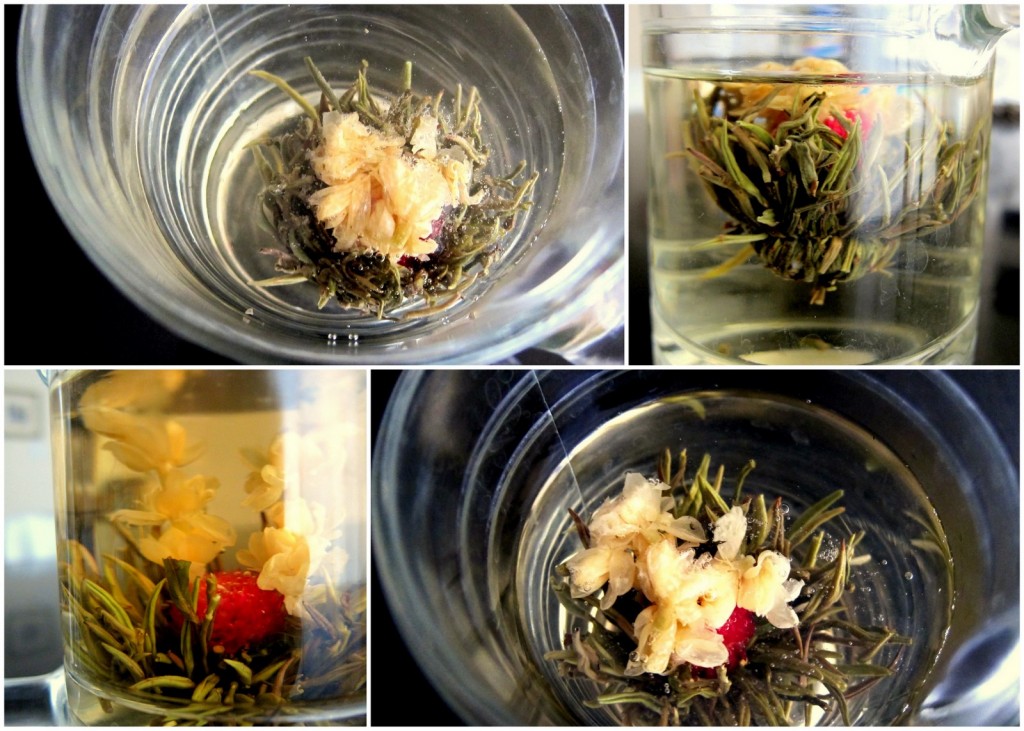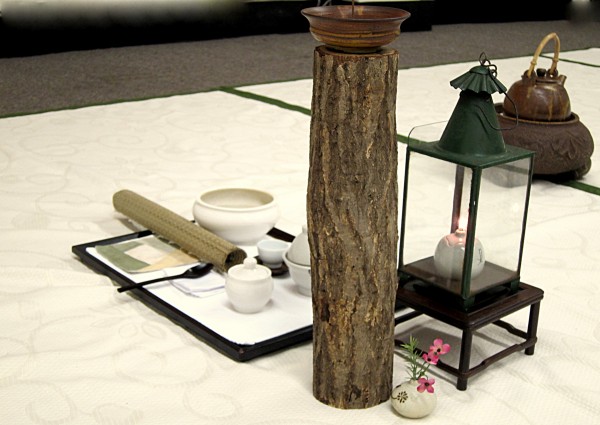 Another pairing of Japanese tea and Japanese snack. A bowl of matcha is supposed to suffice your daily vegetable need because you’re actually consuming the leaves themselves, in powder form. Matcha is served in a bowl. Mix water (205 F) with the matcha powder using a whisk, whose look reminds me of a yard broom in Vietnam, and there is no steeping time to watch out for, which I like. The whisk makes the tea foam up. The lady sitting next to me said that the foam turns her off visually, but actually the foam adds an interesting dimension to the tea. For one, it abates the seaweed taste because the foam is a cushion layer between the tea and the palate, preventing the palate to fully experience the tea. Secondly, together with the powder, it enhances the nuttiness of the tea. Near the end of the bowl, when there is more powder, the tea is extra nutty, akin to mungbean milk. Unfortunately, this nuttiness does not enhance the nuttiness of the kabocha mochi but competes with it. The mochi this time has a hojicha-flavored coat and […]
Continue reading Matcha and kabocha mochi
 Sencha in yunomi, a typical Japanese thick, tall teacup, whose name I’ve yet to find out, accompanied by a matcha mochi, whose fillings include: satsuma sweet potato, red bean paste, orange juice and walnuts. (Thanks Masaaki for telling me the name of the cup in Japanese.) The mochi, handmade and delivered by a mochi lady every week to Teance, is refreshing both in look and in taste. The green tea flavored chewy coat is cool and light. The filling, although dominated by red bean, is not too sweet. I opted for one with less nuts because I didn’t think that I would want such contrast in texture. The mochi lady is a small, timid Asian lady, who smiled so happily when I described her mochi as “refreshing”, and who showed me that I should dip my fork into tea or water before cutting the mochi so that it would not be sticky. Yes, it worked, the fork went straight through with such ease. Now it makes sense why we can chew without the mochi sticking to the teeth. This is my second time having sencha, if we don’t count the time I had […]
Continue reading Sencha and Mochi
 Introducing a new site I’m working on: Tea and Mai. 🙂 Now that I’m regularly attending a tea class and seriously inspired to learn about tea, I figure that I should write down what I learn instead of trying to memorize everything in vain. Consider it also my little contribution to the environment by going paperless. 😉 Why make a new site? Because I don’t want to turn Flavor Boulevard into chock-fulls of yellow-tinted drinks. On relevant occasions there will be posts shared on both sites though, such as this one in the picture above: a post on a few Blooming Teas.
 … with English subtitles. It’s no secret that I’ve been into tea recently, and the interest is going to last for a while. Just in time for my mini-presentation in the Korean class, the topic was open, and I chose tea. Vietnamese tea, to be precise. Neither my Korean is good enough nor my tea knowledge is broad enough to give a more detailed slideshow, but it’s a start. Both will come, in time. 🙂 The title of the slideshow is “Vietnamese Tea”. I have no idea how bad my Korean pronunciation is, so I’ll just pretend that I don’t sound all *that* bad. 😉 I can understand myself, with the subtitles. 😉 Continue reading Four-minute Vienamese tea talk, in Korean
 Between 4 and 6 PM today was the most interesting 2 hours I’ve had this week, and also the most effortless educational experience I’ve had in a long time. That’s how the Korean tea ceremony is meant to be, as I’ve learned: formal but relaxing, and ceremonious but natural. The rules are rather simple to get acquainted to, the movements make sense, and just watching made my mind feel nothing but calmly pleasant. The kind of pleasant feeling one would get gazing off into space alone, on a grassy hillside, on a cloudy day. Now for the logistics. Inje University‘s Traditional Korean Tea Society (TKTS) gave a 2-hour presentation at Berkeley today as part of the “Dew of Wisdom” tour, Stanford and California State University got their tea before us. During the first 40 minutes, the students of TKTS demonstrated two types of tea ceremonies, both accompanied by the slow, deep, hardy rhythm of a 6-string zither 거문고 (geomungo). The first type, 들차회 (deulchahue), is to be enjoyed with friends and relatives outdoor during spring and autumn. The setting is lighthearted, the purpose is to relax and to appreciate nature, […]
Continue reading Two hours with Korean tea ceremony
 Vietnamese Something occurred to me within the last month: I probably should learn to pair drinks with food, but I hardly drink anything beside water and soymilk. Now I would *love* to learn about the different kinds of water, but living in the city makes it a bit difficult, and soymilk can’t be paired with everything like wine (yet). Coffee, alcoholic beverage, juice? Didn’t quite catch on. So what does that leave me? Tea. A quest takes form: Mai is going to learn tea. And Mai will cook with tea, too. Because boiling water to drink tea takes some work, I might as well make it worth a meal. How much influence the ochazuke at Mifune had on me, I’m not sure, but during the two minutes of wringling my brain out for some easy way to use tea in food, the first thing that came to mind was cooking rice with tea. Now that’s the difference between my tea rice and the ochazuke: my tea rice is rice cooked with tea, and the ochazuke is rice eaten with tea, like a soup. As with everything, there’s the easy way and the hard […]
Continue reading Black tea rice
|
|
Blogs we read
|








